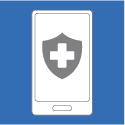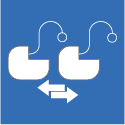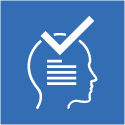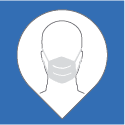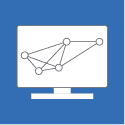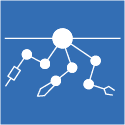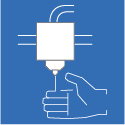Digital health: Technology applications, and policy implications

As more of daily life is digitised, the health space is becoming increasingly reliant on technology, not only to revolutionise health care, but also to continue and maintain its services and products at a societally accepted level.
Global expenditure on health continues to grow, as technological breakthroughs bring patients and doctors closer, regardless of their physical distance. The interplay between big data and algorithms has the potential of leading to better, personalised healthcare services, conceivably making them more affordable and accessible. If the data at the basis of these services is handled in a privacy-forward way, anonymised, constantly updated, and secure, the potential for success is obvious.
However, just as clear are the dangers of exacerbating the disparities that already plague the digital and health ecosystems. These include building on insecure, impractical, or deficient standards, regulatory, or policy environments; expanding the digital divide into a crucial part of life; trafficking sensitive information on unsafe networks; and reducing quality in a tradeoff with quantity and speed.
Applications of technology to the health sector
The health space is increasingly reliant on technology and the repurposing of health data by technology companies seeking health-related insights. The main uses of technology in the health sector include:
- Mobile health (applications used in detecting or preventing health issues)
- Health information technology (electronic medical records, electronic prescribing)
- Precision medicine (customised health care based on genetic information)
- Predictive analytics (use of data to predict health outcomes)
- Telehealth and telemedicine (remote access and use of health care services)
- Consumer tech used to monitor and manage health data (wearables)
- Connected devices used exclusively for medical purposes (e.g. connected pacemakers)
- AI-enabled check-ups
- Observatories that map and monitor disease spread/epidemics
- Biotechnology/bioinformatics (computatisation to study genetics and other biological data)
- Medical Robotics (precision machines aiding in surgery, nursing, blood services and many more)
- Advanced prosthetics (3D-printed prosthetics)
Mobile health (applications used in detecting or preventing health issues)
Mobile health (i.e. mHealth) is the use of mobile devices, such as smartphones and tablets, to deliver healthcare and preventive health services. With wearable devices such as Fitbit or Apple Watch, people are able to monitor their heart rate and be informed of anything out of the ordinary. Healthcare providers also utilise mobile technology to access patients’ records and to communicate with patients and among providers. CareAware Connect, the mobile application developed by Cerner, streamlines the care team’s communication, and visualises the clinical workflow.
Health information technology (electronic medical records and electronic prescribing)
An electronic medical record is an electronic version of a patient’s medical history, which is maintained by a medical care provider over time, and contains comprehensive medical information, such as health issues, list of prescribed medication, past medical history, immunisations, laboratory data, and radiology reports. This technology aims to help healthcare providers make informed and accurate decisions about a patient’s treatment.
Electronic prescribing (i.e. e-prescribing or e-Rx) has simplified the medication prescription process by replacing paper-based prescriptions with electronic data that is sent to the pharmacy of a patient’s choice. Electronic prescribing improves accuracy and enhances the safety and quality of healthcare by replacing hand-written prescriptions, which can be misread by pharmacists.
Precision medicine (customised healthcare based on genetic information)
Precision medicine, also known as personalised medicine, takes genetic differences, environment, and lifestyle into account when diagnosing and treating patients. The practical application of precision medicine is far down the road, however, there has been a constant effort to use scientific knowledge and technique to improve people’s health. Former US President Barack Obama launched a research initiative to accelerate the progress of precision medicine in January 2015. For precision medicine to reach its full potential, data needs to play a vital role, however, it remains a major challenge. Data collection, data incompatibility, and data sharing are among the issues that need to be addressed. It is a daunting task to collect the data of thousands of patients and to consolidate it into a new system that can be accessed by a number of actors in the medical world, while at the same time ensuring the privacy of patients whose data is going to be stored in the system.
Predictive analytics (use of data to predict health outcomes)
Predictive analytics (PA) has increasingly strengthened its presence in the medical sphere. PA uses digital technology (algorithms, machine learning, artificial intelligence, etc.) and statistical methods to predict outcomes for individual patients by searching and analysing vast amounts of information. Various actors in healthcare can benefit from predictive analytics: doctors can enhance diagnosis by using patients’ data, as well as better tailor treatment to each patient; patients benefit from the improved outcome of their treatment and save time and money on treatment and medicine that is unsuited for them; and, employers can predict the cost of health insurance for their employees by using the data that they have on them. However, there are certain risks that need to be addressed: the security and integrity of the data; the moral hazards of PA; and the lack of regulation and algorithm biases. Evidently, thousands of patients’ data needs to be registered in order for PA to be successful. How to store the data securely is one of the main concerns. Regarding moral hazards, doctors may end up taking more risks because the decision-making is outsourced to a machine, and they may think that computers are liable on their behalf. Finally, as technology advances with a speed greater than that of statutes, there is an inadequate regulatory framework for PA in the sphere of health. A legal framework to address algorithm biases to ensure that every patient, regardless of class, gender, age, and race benefits from PA, remains inadequate.
https://www.elsevier.com/connect/seven-ways-predictive-analytics-can-improve-healthcare
Telehealth and telemedicine (remote access and use of healthcare services)
Telehealth is the use of information and communications technology (ICT) to access healthcare services remotely. Access to healthcare, especially for people who live in rural areas or have limited mobility, would improve with telehealth and telemedicine. For instance, people can use their mobile phones or other devices to log food that they ate , medication, and blood sugar levels that can be reviewed by nurses remotely. The patient portal is another example of telehealth, where patients can make an appointment and review their medical records and examination results. By using an online teleconference application, virtual consultations by doctors and nurses are made available as well. The UnitedHealth Group, an American health insurance company, offers virtual visits, an online platform that connects their clients with doctors through video chat, regardless of time and location.
Consumer tech used to monitor and manage health data (wearables)
The consumer’s use of wearable technology to monitor their own health has become mainstream over the last few years and there is no sign of it slowing down. Fitbit not only counts the number of steps taken per day, monitors heart rate and sleep, but also predicts approaching menstrual cycles and fertile windows for women. A wearable device might even save a life in an emergency. Apple Watch Series 4 or later can detect a fall and contact emergency services if there is no response from the wearer after showing the alert and message on the screen. Wearable devices for health could also change the way we deal with long-term illnesses. For instance, there is an ongoing project to develop a bracelet to alert the wearer of a looming asthma attack by monitoring the nitrite content in exhaled breath condensate.
Connected devices used exclusively for medical purposes (e.g. connected pacemakers)
Before the prevalence of the Internet of Things (IoT) in healthcare services, people with pacemakers had to visit their doctors regularly for a check up. Nowadays, with Bluetooth-enabled pacemakers, heart patients can send their data to their doctors through their mobile phones or other electronic devices. This technology increases convenience both for the patients and doctors, as well as reducing medical costs associated with in-person consultation. Furthermore, IoT pacemakers automatically transmit information to doctors if a battery’s life is near its end, or if it detects a programming issue.
AI-enabled check-ups
Introducing artificial intelligence (AI) technology into health check-ups will be more forward-looking and enable people to take proactive measures accordingly to their situation. Selvy Checkup, an AI healthcare solution developed by Selvas AI, predicts an individual’s risk of major diseases developing in the next four years, based on the examination of data. The list of predictable diseases includes ten diseases, of which six are major cancers, such as breast cancer and liver cancer. The predictions are based on health exam data and Selvas AI technology. In addition, Ada Health, a German based company, launched a free AI-powered application, with which users can check their symptoms and seek appropriate care. The company says that the app has had a significant impact, particularly in sub-Saharan Africa and Asia, where access to medical services is limited.
Observatories that map and monitor disease spread/epidemics: Digital epidemiology
Digital epidemiology shares the same goal as traditional epidemiology: to understand the trends and patterns of health and disease in a population. A formidable difference is that digital epidemiology uses data that is not produced by health and medical experts. It uses digital data, such Internet search engine patterns, Twitter, and other social media sources.
Google Flu Trends and Google Dengue Trends was launched in 2008 and was one of the first popular online platforms of digital epidemiology; aggregating search patterns, the system attempted to predict the outbreak of influenza and dengue fever in more than 25 countries. However, after missing the peak of the 2013 flu season by 140%, Google stopped publishing their predictions.
The Digital Epidemiology Lab developed an application called Crowdbreaks to track trends about major health and disease-related issues in real-time across different continents. This disease surveillance system is project-based and is currently working on vaccine sentiment tracking.
Biotechnology/bioinformatics (computatisation to study genetics and other biological data)
The UN Convention of Biological Diversity defines the term ‘biotechnology’ as: any technological application that uses biological systems, living organisms, or derivatives thereof, to make or modify products or processes for specific use. The application of biotechnology in medical setting includes producing pharmaceutical drugs to prevent and cure diseases, and studying DNA (deoxyribonucleic acid) to better understand how to manipulate the genetic makeup of cells. The use of bioinformatics technology is increasingly marketised. Perhaps the most popular bioinformatics-related products are take-at-home DNA testing kits, such as 23andMe and HomeDNA.
Medical robotics (precision machines aiding in surgery, nursing, blood services, and many more)
The emergence of robotics has inevitably raised concerns over job loss among human counterparts, low-skilled labour, in particular, is being replaced by robots. However, robotics in the medical context means great possibility for better diagnostics, less invasive surgery, improved precision, quicker recovery, and less waiting time. The Da Vinci is a robotic-assisted surgical instrument which a surgeon controls via a console. This system can be applied to diverse types of surgeries: cardiac; colorectal; general; gynecological; head and neck; thoracic; and, urological. Moreover, robotic nurses have been introduced to hospitals and are assisting nurses by running errands for them, such as gathering supplies and bringing them to patients’ rooms, delivering samples to labs, fetching items, and preparing rooms for new admissions.
Advanced prosthetics (3D-printed prosthetics)
The 3D printing technology has revolutionised the designing and production of prosthetics by making them more affordable, with the possibility to fully customise them to the wearer. Hero Arm is the world’s first clinically approved 3D-printed prosthetic arm. The arm works through sensors that are placed on the wearer’s muscles. The sensors send an electric signal that enables the hand to move when specific muscles are flexed. Each finger moves independently, therefore, the wearer can grip, pinch, and high-five as they want. Compared to traditional prosthetics, the 3D-printed bionic arm provides the wearer with both physical and social comfort.
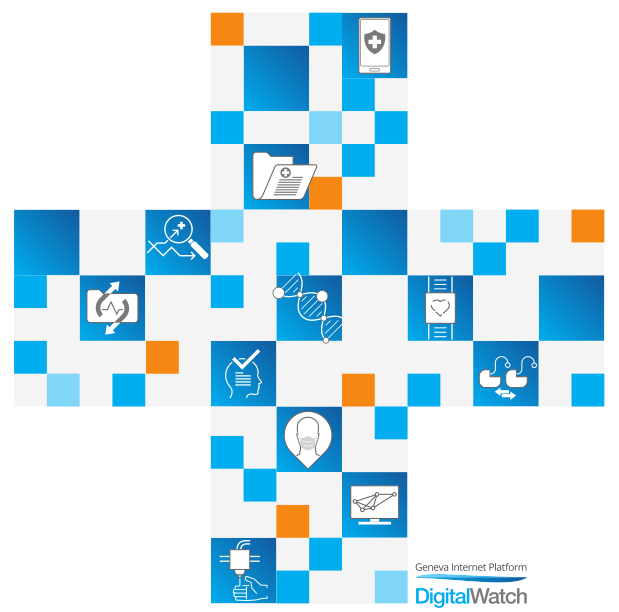
The policy implications of digital health
Technology and Infrastructure
Technology and Infrastructure concerns related to health are not uniquely tied to the health space; the content and application issues that make up the infrastructure basket are the same across their uses:
- Interoperability is both a concern and an opportunity at the confluence of technology and the digital space. The way in which data is collected and stored in numerous countries, varies widely from department to department, and between different health care organisations. However, properly executed digitisation could alleviate this issue, lowering costs and improving quality by creating or enabling a patient data ecosystem.
- The issue of net neutrality may be functionally related, as hospitals and other health providers may ask for dedicated fast lanes for patient data traffic. Some jurisdictions, such as the EU, have carved out specific exceptions for health and specialised services.
Cybersecurity
When looking at the nexus of health and the digital field, cybersecurity is a key concern. Beyond the stable, functional, and reliable use of the Internet, the underlying baseline assumption in the use of technology and its applications in the health field is that the data is safe.
- As more data is collected, stored, and used, data breaches become more common. Health data is, by definition, sensitive, and health-data breaches carry a significant extra burden in how the public relates to them.
- Encryption is crucial to the safety of health data. It both protects data from prying eyes, and helps assuage fears patients and consumers may have about sharing or storing sensitive data through the Internet.
- Ransomware attacks threaten the proper functioning of hospitals and other care providers. For example, the Wannacry ransomware attack affected a significant part of the UK’s National Health System. The exploited vulnerability had been patched in an updated version of the operating system, but the affected hospitals were still running older versions.
- Connected devices produced by manufacturers from industries not traditionally bound by cybersecurity standards will have an outsized impact on the overall security of health data.
Legal and Regulatory
Legal and regulatory concerns that may affect health are not necessarily of the digital variety. However, data governance is a crucial element. The mesh of international and national legal and regulatory bodies, treaties, and agencies that govern data, specifically as it pertains to the health space, is one that deserves further consideration.
- Jurisdiction issues concerning health data collected by devices or wearables further complicate the landscape, as international companies that manufacture and maintain the products may very likely be in different locations than the users, each governed by dissimilar or even substantially divergent regulation. Ongoing disputes, legal cases, and conversations on the broader aspect of the jurisdiction of data will hopefully elucidate at least a small portion of this complex layer.
Economic
Consumer protection may be the most important aspect of the economic basket regarding the digital health space. Levels of consumer protection in general, and in the (digital) health space in particular, vary widely around the world. They depend on each jurisdiction’s approach to consumer harm, deceptive and harmful practices, and fairness.
Consumer trust factors into decisions that consumers make when dealing with technology-enabled products and services, and even more so when it relates to their health. Many data-enabled products and services carry with them a sense of increased uncertainty, as proprietary algorithms and opaque processes allow for very little insight into their mechanisms and decision-making structures. However, a transparent approach that leverages accountability can lead to not just more users and consumers, but also to an increase in their willingness to share data in exchange for the promise of better results or better health care.
As a result, the bioinformatics market could grow substantially, where government and private companies spend significant amounts of money on a wide range of applications and in many fields from molecular medicine to agriculture.
Human rights
Health data is considered protected and highly sensitive, regardless of jurisdiction. It encompasses stricter rules, specific and stringent baseline assumptions on privacy and security, a limited scope in terms of who gets access and how, and the precise levels of disclosure, all under serious penalty when breached. But countries and regions differ in their approach. The EU, for example, with its General Data Protection Regulation, has broader regulation (and some areas, like genetic or biometric information, require additional protection), while the USA, with its Health Insurance Portability and Accountability Act, limits these constraints to traditional healthcare providers.
As conversations about the implied tradeoffs of free digital services heat up, privacy is becoming a mainstream topic. Although the health space brings with it an inherent privacy-protective framework, what constitutes ‘health’ data is up for debate, as wearables, applications, and data brokers look to disrupt this area, and may bypass more lax regulation. Conversely, patients, users, and citizens must have access to their own health information, in a format that allows for easy digital transfer. Ransomware and other cyber-attacks, along with data leaks from originators, intermediaries, or final users of health data bring these concerns into sharp focus. Data protection has become a significant and obligatory hurdle that both companies and legislators have to negotiate, as health and technology further converge.
Development
As digital health is embraced in the developed world, the digital issues that the developing world faces, such as the lack of a reliable communications infrastructure, are coming to the fore with the implementation of new health technologies and services.
Fundamentally, the crossroads of health and technology relies on not just electricity and other basic services, but also on access to the Internet. Many services require good connectivity, sometimes long, uninterrupted sessions, and produce high amounts of traffic. As innovation and progress push health towards an interconnected digital future, the provision of universal access, and the necessity of alleviating the digital divide, become increasingly important.

